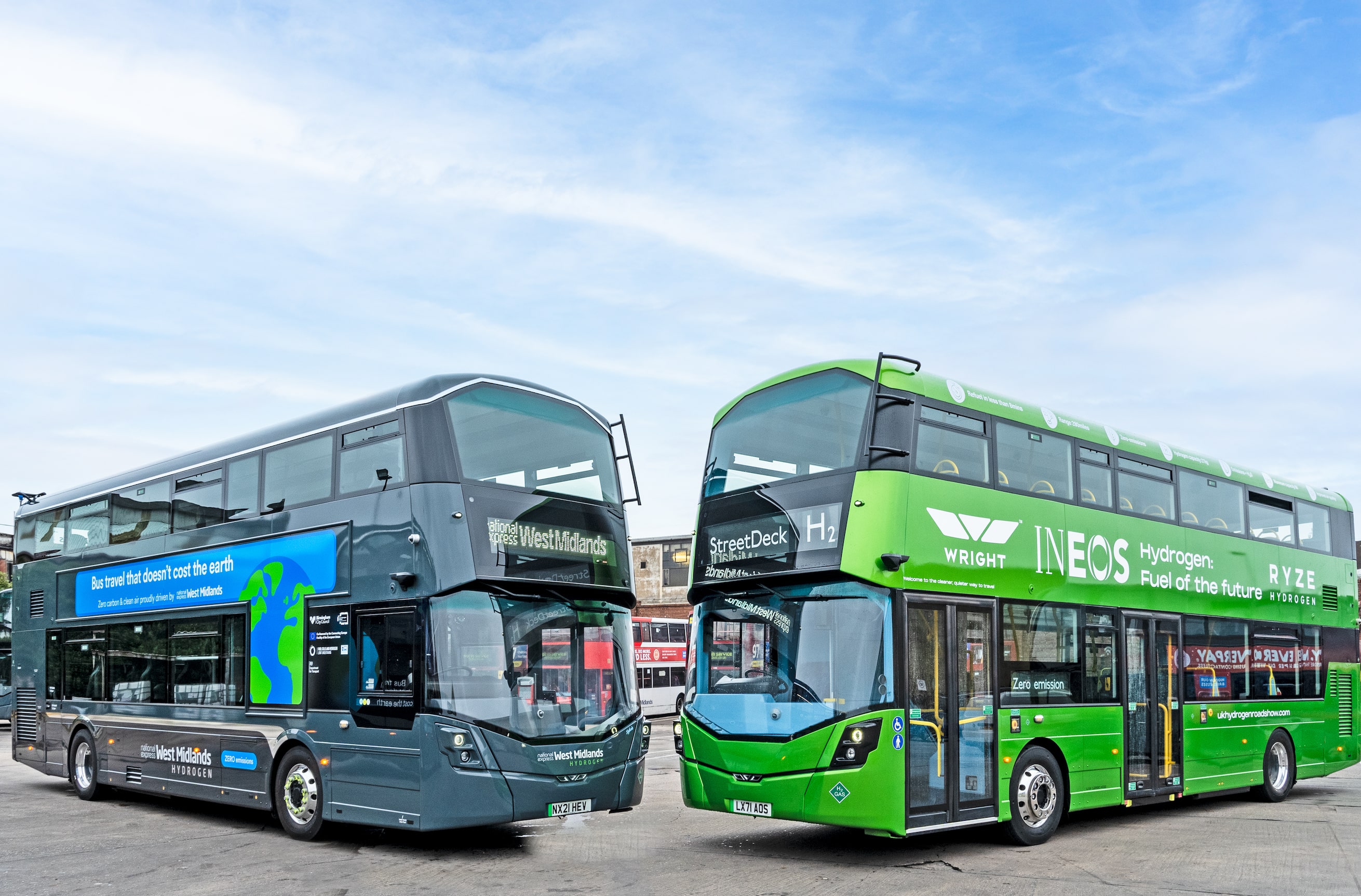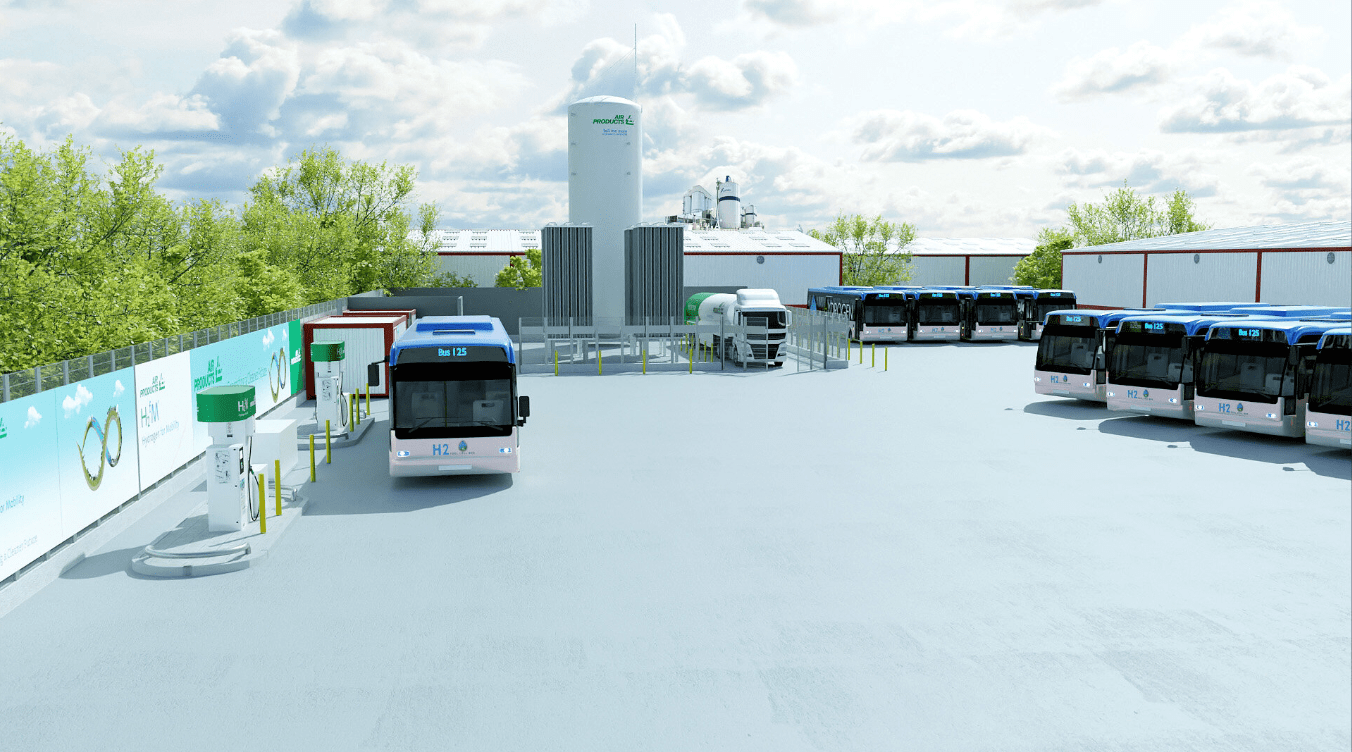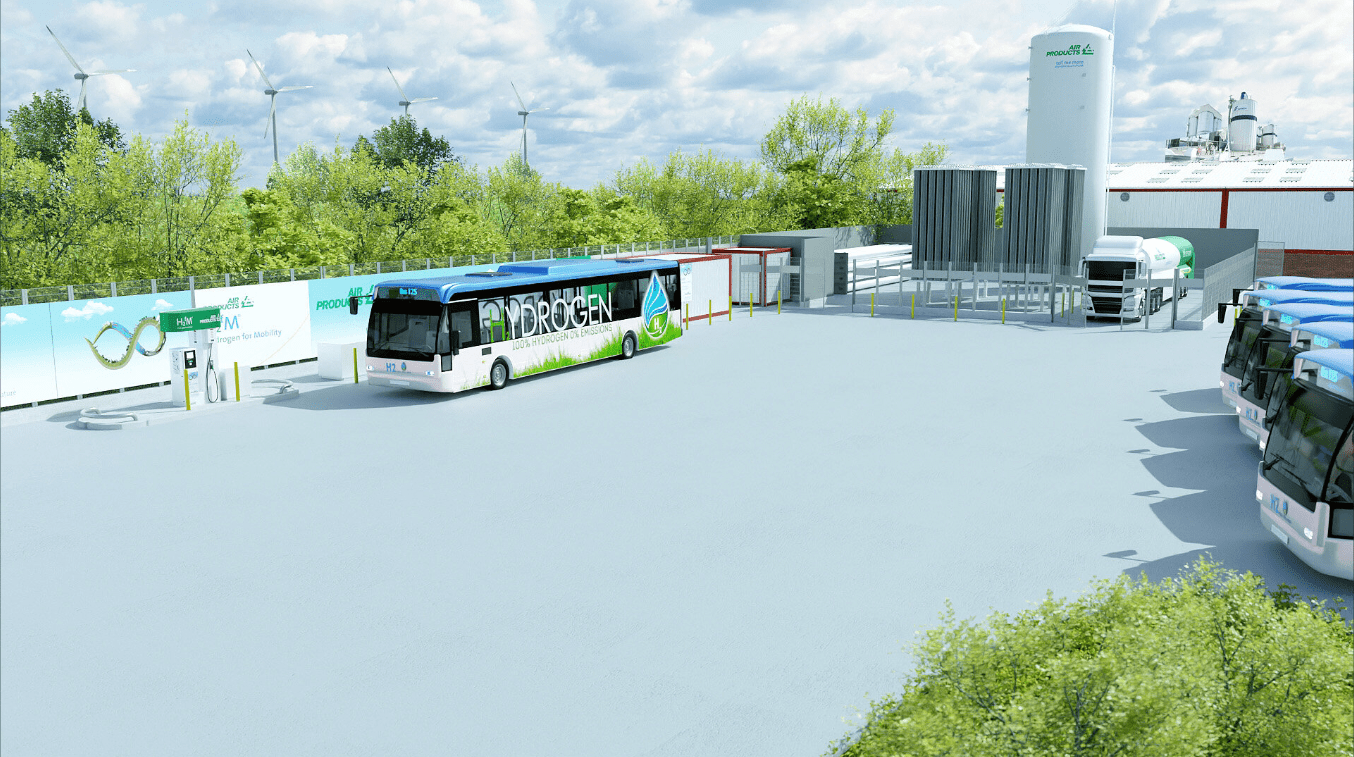routeone discusses the present UK hydrogen landscape with Manish Patel, Air Products UK Hydrogen for Mobility Director
In the last decade, hydrogen as a fuel source for vehicles has taken a decisive step from testing and trialling towards commercialisation, particularly with the publication of hydrogen strategies across Europe.
One supplier and infrastructure provider at the forefront of the push for the mass rollout of hydrogen as a fuel is Air Products. In 2012 it installed one of the UK’s first public hydrogen refuelling stations at Heathrow, a pioneering early footing for hydrogen in the UK commercial vehicle market; supplied the fuelling infrastructure and the hydrogen fuel for Transport for London for 10 years on its RV1 route; and last year agreed a 15-year supply deal with GoAhead Group at its Crawley depot. This involves installing a liquid hydrogen fuelling station for 20 GB Kite Hydroliner single-deckers, eventually expected to cover a full depot conversion.
Globally, the company now operates over 250 hydrogen fuelling stations, has plans for a major refuelling hub in Immingham, and is planning what it says will be the world’s largest green hydrogen facility in NEOM, Saudi Arabia, as part of a $15bn global investment in green and low carbon hydrogen.
Present at Euro Bus Expo (EBE) for the first time in 2022, the company has faced numerous questions from UK coach and bus operators on what the realities are when it comes to hydrogen in the UK – and is here to answer them.
 Choosing the right fuel
Choosing the right fuel
Discussions on hydrogen invariably lead to the acknowledgement that, in order to meet emissions reductions targets, multiple fuel alternatives will be used. Choice will be guided by location, duty cycles, and available infrastructure.
Manish Patel, Air Products UK Hydrogen for Mobility Director, reveals that events such as EBE have been useful to discuss developments and how hydrogen technology is moving forward, with emphasis on how the supply of the fuel is going to be reliable and how operators can prepare to make the business case for conversion work. “That, really, is thinking about where you want to be in the long term and not the short term,” he says.
One example is an operator that wishes to convert five vehicles to zero-emission in a depot of 100. Choosing an alternative fuel type will require investment of infrastructure. That operator therefore must envisage how that conversion may look in 10 years’ time. When analysis of the cost of infrastructure for 100 vehicles compares different fuel types, that, Manish says, is where hydrogen comes into its own.
Infrastructure for hydrogen refuelling can differ greatly depending on the size of an operation. Smaller uses see gaseous hydrogen currently used to refuel buses at 350bar. Air Products believes a small fleet conversion using 500kg or less of hydrogen warrants gaseous hydrogen as the right solution as 600bar trailers carrying one tonne of hydrogen become available.
But five or six trailer deliveries per day is not attractive for operators converting larger fleets, both in terms of space and in terms of compression power needed to refuel. The correct solution in that case is a liquid hydrogen tank, which delivers fuel like a diesel tanker. In place of a compressor it uses a cryogenic pump, which draws liquid from the tank and feeds it through a vaporiser and into the vehicles at 350bar. Eventually, GoAhead’s Crawley depot will have two five-tonne tanks, which with 100 buses, would need refilling weekly, depending on exact usage. Operationally, that provides a reliable fuel source.
“The beauty of that large system is that it costs no more to install than a gaseous system for about 20 vehicles,” says Manish. “If an operator makes the capital investment once, it won’t cost any more to grow. All you then pay for is the cost of the hydrogen fuel that you’re consuming.”
An additional benefit to long-term hydrogen conversion avoids one of the complications of battery-electric vehicles, insofar as it does not require an anticipation of higher grid capacity. Manish urges operators looking at depot conversion not to be swayed by short-term economics. “Look at what the cost is now,” he says, “but also what the total operating cost will be, and ask if your grid has the capacity.
“Also consider that at least 40% of power on our grid is still carbon based. If you have to report your carbon intensity, you will need to compare apples to apples – don’t be caught out if you have to source renewable energy, which will become more expensive as it becomes more in-demand.”
Work on public infrastructure
While now may not be the right time for smaller operators to pursue hydrogen as an alternative fuel source unless sizeable fleets are under conversion, the time when public fuelling infrastructure and hydrogen coaches are available is approaching.
Air Products is involved in the rollout of that infrastructure. Its proposals for the 47-acre green hydrogen facility in Immingham, where 10,000 tonnes of hydrogen will be stored as ammonia, has the capacity to take up to 20,000 diesel HGVs off the road. Public consultation began this month.
Manish reveals that wider infrastructure should start to be in place by 2025 or 2026. “We are ready and willing to build a public refuelling network. We’ll see a good scale of hydrogen fuelling stations across the country depending on government policy,” he says. “But we still need the government to make some moves. We can see that the European Union has a €1.5bn fund that supports the rollout of a public network of hydrogen fuelling stations. We need the UK government to enable something similar to happen.”
Manish encourages independent operators that want to start thinking about a path to zero-emissions to remember that 2026 is not far away – and if any are ambitious about achieving zero-emission operation by 2026 or 2027, they should consider contacting OEMs about when hydrogen fuel cell-electric vehicles will be coming to market.
“The time when we get UK parity on [the refuelling network], will be the time operators can have confidence in placing those orders,” adds Manish. “But operators can start the process of thinking about it now.”
This comes down to a chicken-and-egg scenario, which Air Products is trying to break. Hydrogen is in high demand – and Manish says government needs to help generate UK demand by encouraging OEMs to build the vehicles if it wants to be at the head of the queue. “The hydrogen molecule is there,” he says. “Now the question is where the molecule will go – and it will go where the demand is. Demand is in mobility, where the vehicles are. And scale drives cost down.
“The Zero Emission Bus Regional Areas (ZEBRA) scheme was great, because it enabled operators to fund that difference – but we need an ongoing programme from government that guarantees those vehicles will continue to come. So far, ZEBRA has funded 124 hydrogen fuel cell-electric buses for Transport for West Midlands – that will not support a triple figure hydrogen production plant.”

Positive conversations
Manish reveals he is optimistic and that there are good conversations with the UK government, concluding that it is just a “matter of timing” when the step change will happen. But there is a difference between good conversations and ambitious carbon reduction targets, and the presence of real funding.
“The UK has the opportunity to incentivise vehicle OEMs,” he adds, pointing to long-term funded projects in Germany for developing fuel cell and battery-electric drivelines for commercial vehicles. “It just needs to commit, so that operators and OEMs know that funding will launch again every year for the next 10 years. That will be transformative.
“Air Products stands ready to invest, and has a plan ready; but to hit the execution button, we need government to show a clear commitment that, if we put down that infrastructure, it will support the cost of the vehicles and create demand. It’s then a market risk that we’re happy to take.
“We’re not saying we want a guaranteed risk-free investment – we just want to make sure that, with the first generation of vehicles, operators can afford to buy in.”






















 Choosing the right fuel
Choosing the right fuel






